
BMW X3 Estate (2011-2017) engines, drive and performance
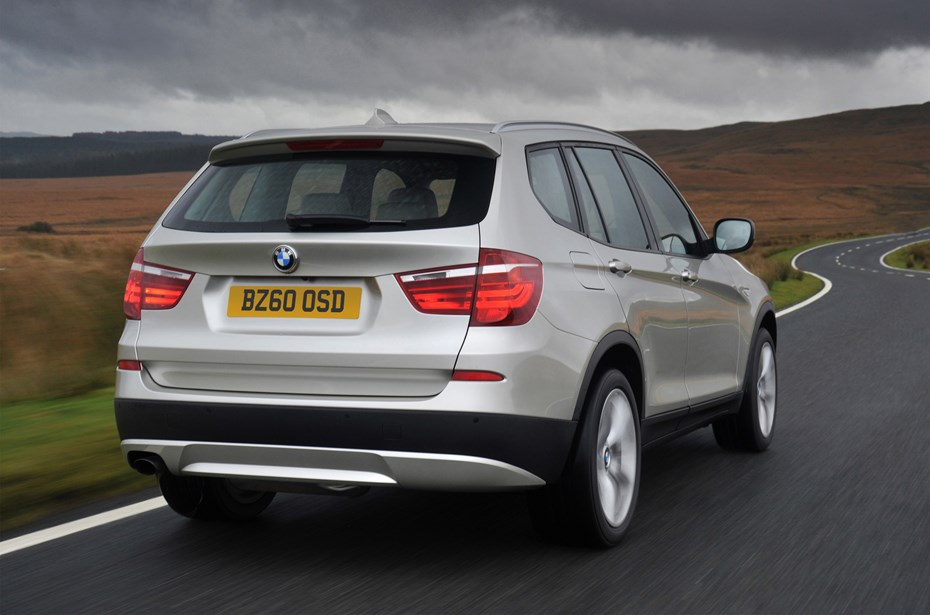
- Diesel-only range for UK buyers
- They’re all punchy and efficient units
- Four-wheel drive standard on early cars
When the F25 BMW X3 was first launched, it was only available with one 2.0-litre four-cylinder diesel engine. However, BMW expanded the car’s range during its production run with a range of larger, more powerful units.
Diesel engines
The X3’s first engine was a 184hp 2.0-litre diesel unit. When the car was new, BMW said that not enough of its UK customers would buy a petrol engined SUV, so it didn’t offer the fuel choice to its British buyers.
This wasn’t such a bad thing, though, because this 2.0-litre diesel engine is a good unit (if it’s properly maintained. It can sprint from 0–62mph in 8.5 seconds and hit a top speed of 130mph. It’s not rapid, but it’s swift – and it’s teamed with a smooth-shifting six-speed manual gearbox or an eight-speed auto.
Compared to its main contemporary rival, the Audi Q5 2.0-litre TSFI, the X3 takes the same amount of time to reach 60mph and it has an identical top speed. If you fancy this unit, we reckon the automatic gearbox is the best choice not only for emissions but also for daily commuting.
When we drove the manual, we felt we were working quite hard to get the best from the engine. It constantly felt slightly under powered. However, when we switched to the automatic (which has two extra gears to play with) we found the car felt more eager throughout its rev range. It gives the engine a good mechanical advantage.
In mid-2011, BMW added two 3.0-litre turbodiesel models in 30d and 35d forms with 258hp and 312hp respectively. They offer superb performance and refinement and, when the X3 was new, they turned the car into one of the quickest, most capable SUVs money could buy. They’re still quick today, in fact.
Then, in the middle of 2012, BMW rounded off the X3 range with the 18d. It uses uses a detuned version of same 2.0-litre engine fitted to the 20d with 142hp. The missing power drops the X3’s for 0–62mph time down to 9.9 seconds. It matches the 20d for refinement and economy, but betters it for CO2 emissions with figures of 135g/km for the manual or 142g/km for the auto.
Post-2014 diesel engines
BMW facelifted the X3 in 2014, improving the engines’ efficiency and performance across the board. The car’s post-2014 range kicks off with the two-wheel-drive sDrive 18d. It’s available with either a manual or automatic transmission and will get the X3 from 0–62mph in just under 10 seconds.
All other models are four-wheel drive. The next rung up in the tree is the xDrive 20d, another 2.0-litre four-cylinder unit with a choice of manual or auto gearboxes but this time with 187hp. BMW claims 0–62mph in 8.1 seconds regardless of which gearbox is fitted.
At the top of the range, there’s the xDrive 30d and xDrive 35d. Both are 3.0-litre engines available only with automatic transmissions. The 30d has 255hp and the 35d a meaty 309hp. BMW claims a 0-62mph time of 5.9 seconds for the 30d and 5.3 seconds for the 35d – not bad for a heavy 4x4.
What’s it like to drive?
The X3 feels more like one of BMW’s saloons than a 4x4. It is very agile for its size, the steering is sharp and this gets even better when you select the sports button (located on the central console) which also sharpens up the throttle response.
We compared the X3 with its contemporary rivals, such as the the Land Rover Freelander and the Audi Q5, and found that the BMW was much more fun to drive. It has firmer suspension than both which keeps body roll to a minimum.
The X3’s road manners are enhanced by BMW’s ‘xDrive’ four-wheel-drive system. The system senses when a wheel is slipping and applies power to the others to keep traction, which means brilliant grip both on and off-road.
During our test in Austria, the X3 proved very capable in slippery conditions. With winter tyres fitted it dealt with snow and ice without a problem. Negotiating Alpine slopes with the hill descent control steep was also child’s play, as the did a great job of nipping the brakes to manage the car’s bulk.
On the road, the X3’s handling is assured and, although the ride is firm, it’s not as lumpy as that of the previous-generation X3.


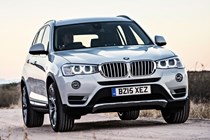
.jpg)
.jpg)
.jpg)
.jpg)
.jpg)
.jpg)
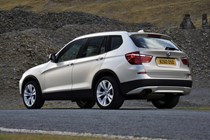
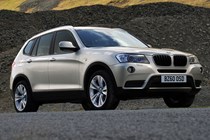
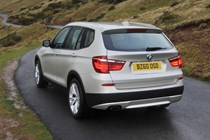
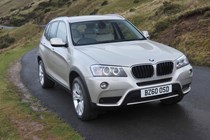
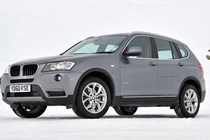
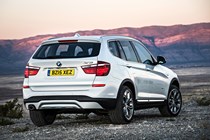
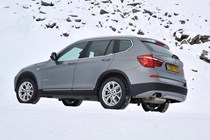

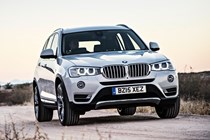
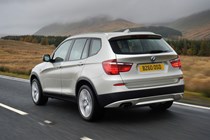
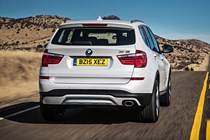
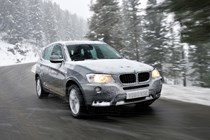
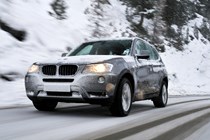
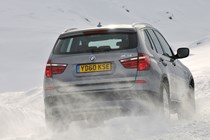
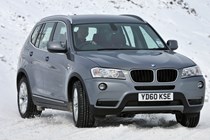
.jpg)
.jpg)
.jpg)
.jpg)
.jpg)
.jpg)
.jpg)
.jpg)
.jpg)
.jpg)
.jpg)
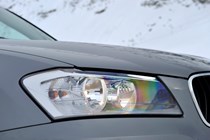
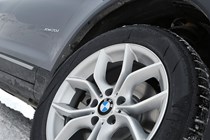
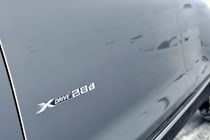

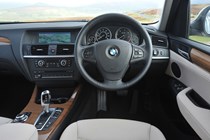
.jpg)
.jpg)
.jpg)
.jpg)
.jpg)
.jpg)
.jpg)
.jpg)
.jpg)
.jpg)
.jpg)
.jpg)
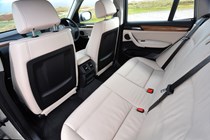
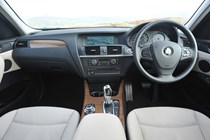
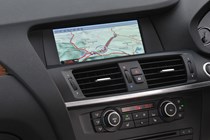
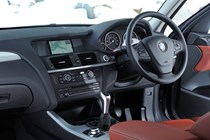

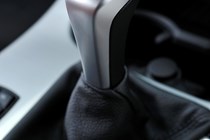
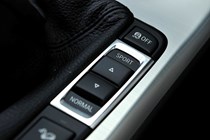
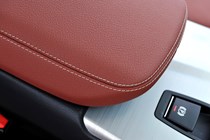
.jpg)
.jpg)
.jpg)
.jpg)
.jpg)
.jpg)
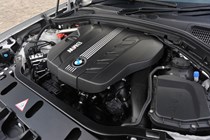
.jpg)
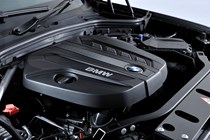

.jpg?quality=50)
.jpg?quality=50)
.jpg?quality=50)
.jpg?quality=50)
.jpg?quality=50)
.jpg?quality=50)















.jpg?quality=50)
.jpg?quality=50)
.jpg?quality=50)
.jpg?quality=50)
.jpg?quality=50)
.jpg?quality=50)
.jpg?quality=50)
.jpg?quality=50)
.jpg?quality=50)
.jpg?quality=50)
.jpg?quality=50)





.jpg?quality=50)
.jpg?quality=50)
.jpg?quality=50)
.jpg?quality=50)
.jpg?quality=50)
.jpg?quality=50)
.jpg?quality=50)
.jpg?quality=50)
.jpg?quality=50)
.jpg?quality=50)
.jpg?quality=50)
.jpg?quality=50)








.jpg?quality=50)
.jpg?quality=50)
.jpg?quality=50)
.jpg?quality=50)
.jpg?quality=50)
.jpg?quality=50)

.jpg?quality=50)
